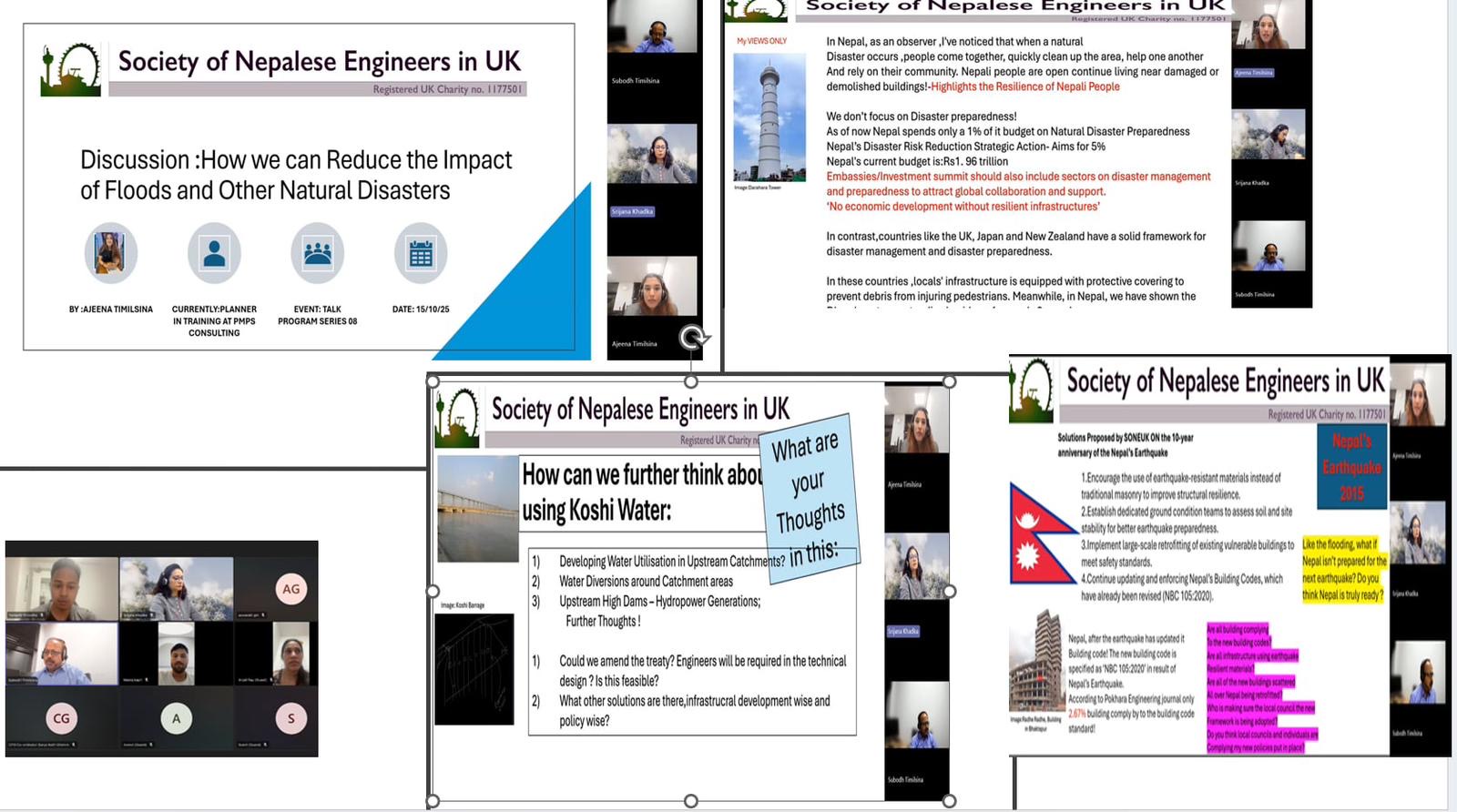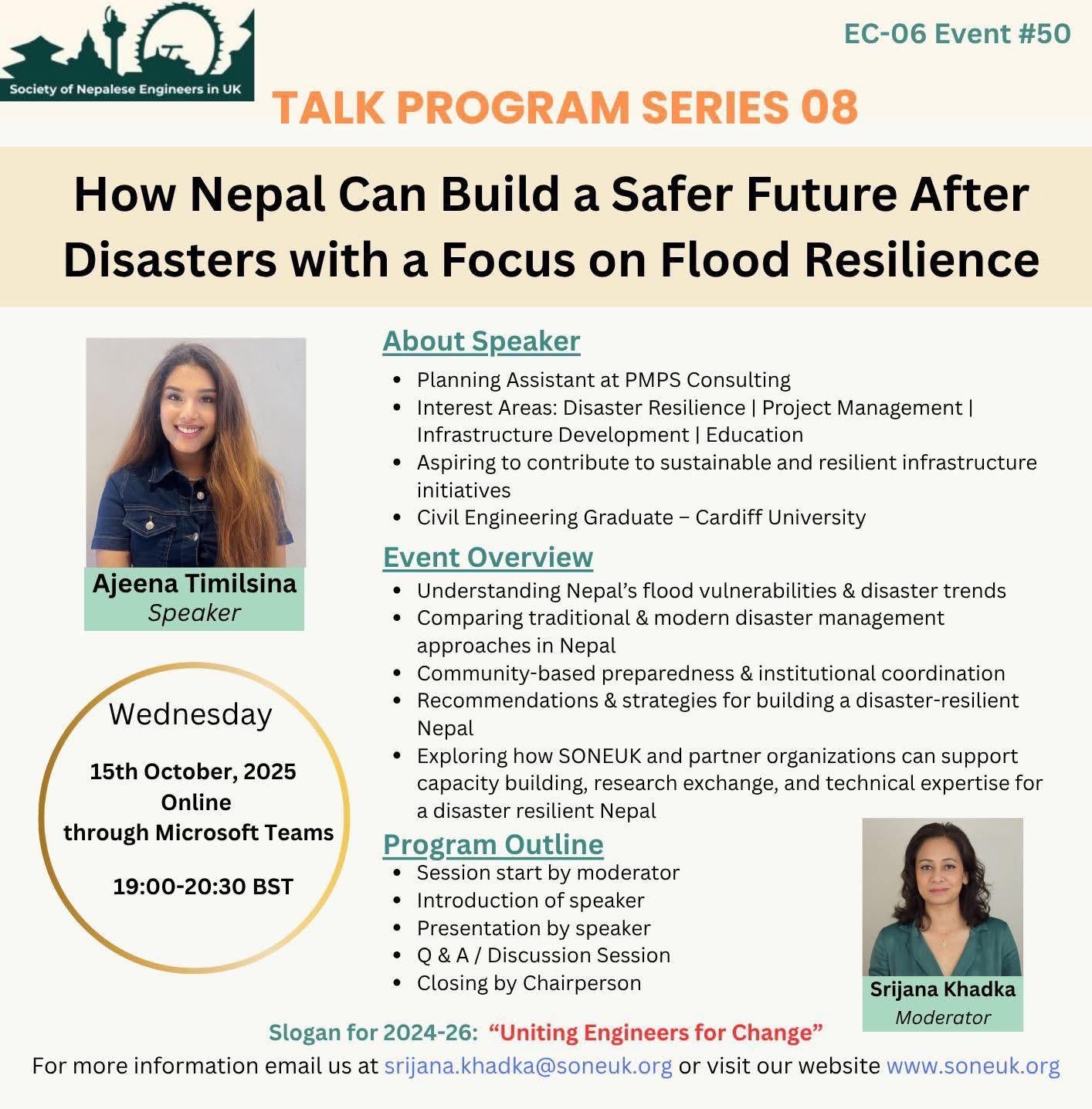SONEUK Talk Highlights Pathways to Building a Flood-Resilient Nepal




London: The Society of Nepalese Engineers in the UK (SONEUK) successfully held its Talk Programme Series 08, titled “How Nepal Can Build a Safer Future After Disasters: With a Focus on Flood Resilience.” The event took place on 15 October 2025.
The session was moderated by Engineer Srijana Khadka, and Young Engineer Ajeena Timilsina presented her research on Understanding Nepal’s Flood Vulnerabilities and Disaster Trends. The event took the form of an open discussion, encouraging participants to share insights on practical disaster resilience strategies.
Ajeena discussed traditional and modern approaches to disaster management in Nepal, community-based preparedness, institutional coordination, and strategies for building a disaster-resilient nation. She also highlighted how SONEUK and its partner organisations can contribute to capacity building, research exchange, and technical expertise in disaster management.
Sharing her motivation for focusing on disaster resilience, Ajeena spoke about her interest in sustainable infrastructure and her aim to explore how engineers in the UK can support Nepal’s disaster preparedness and recovery. She emphasised that while natural disasters cannot be prevented, their impacts can be reduced through early warning systems, resilient infrastructure, adaptive policies, and improved community preparedness.
She noted that Nepal currently allocates only around one per cent of its national budget to disaster preparedness and compared this to countries such as the United Kingdom, Japan, and New Zealand. She stressed the importance of stronger policies and disaster education, suggesting that Nepal could adopt initiatives such as a “Monsoon Awareness Week,” similar to international examples where disaster management is included in school curricula and community drills.
Presenting recent flood data, Ajeena reported that 205 people died in 2022, 104 in 2023, 224 in 2024, and 47 so far in 2025. Referring to the National Disaster Risk Reduction and Management Authority (NDRRMA), she acknowledged progress but noted that much more still needs to be done.
She proposed practical solutions, including the use of eco-friendly construction materials, upgrading sewage systems, building flood defences, enforcing zoning laws, planting trees, and organising compulsory community drills. She also encouraged collaboration with universities and research institutions to strengthen early warning systems and apply artificial intelligence in flood forecasting and management.

During the interactive discussion, participants shared their views on the Koshi Barrage and long-term solutions for recurring Koshi floods, contributing valuable perspectives from both technical and policy standpoints.
The programme concluded with closing remarks from Chairperson Er Subodh Timilsina, who thanked the speaker and moderator for their contributions. He expressed appreciation for the engaging discussions and reaffirmed SONEUK’s commitment to promoting dialogue, research, and innovation in disaster resilience and sustainable engineering.











